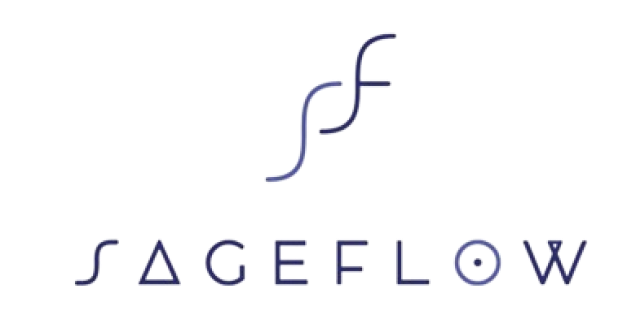You may have spent your time previously looking for ways to increase revenue and productivity. However, in the hustle of the day-to-day grind, the need for employee retention often goes unnoticed.
A skilled employee will contribute to the revenue through their efficiency and productivity. Losing them can lead to significant financial strain and time wastage.
Although potential losses are significant, investing in retention efforts can help the workforce thrive. When employees are happy, turnover inevitably decreases. If you are looking for ways to stop losing talented, trained employees, this is the right place.
In this blog, we will discuss the top 10 advantages of employee retention and ways to retain staff to accelerate business growth.
What Is Employee Retention?
Employee retention is the process by which an organisation retains its best staff and reduces turnover.
Whenever there is an employee turnover, it derails your company’s growth plan and strategy. As more people leave your company, the workflow goes into triage mode.
When you hire the right person for the correct position, the productivity automatically increases. Keeping them satisfied through a positive work environment and showing appreciation consistently, contributes largely to staff retention.
Employee retention approaches that focus on voluntary turnover, is disadvantageous to the organisation, rather than the loss of a bad performer.
This is a reason why talent management and workforce recruitment are essential for success. Hence, staff retention is critical to supporting growth, engagement, and trust in an organisation.
Why Do Employees Leave?
Employee turnover can occur when a company has limited growth prospects or a toxic culture. Most departures occur due to career growth needs and organisational factors, rather than compensatory factors.
However, the reason for leaving may resonate differently with each person. This is why understanding your employees’ expectations are essential. Identifying the cause helps you solve recurring issues and enhance employee retention.
Here are some of the common reasons why employees leave their organisation –
- When there is a lack of work-life balance in the company.
- The employers don’t value staff recognition and appreciation.
- You have a high workload but are underpaid.
- The company doesn’t provide training or opportunities for upskilling.
- Workplace practice toxicity, negativity, and invectives.
- Your company prefers micromanagement and favouritism.
- Firms that prefer routine and stagnant work, leaving no scope for improvisation.
- Better job opportunities in different organisations.
Why is Employee Retention Important?
The need for maintaining employee retention goes far beyond financial management. It impacts the company’s overall performance, culture, and client experience. Reducing turnover can reduce the cost of recruiting, hiring, and training.
Higher morale and a resilient work culture are among the advantages of employee retention that significantly affect the business. Hence, a stable workforce will automatically bring consistency, efficiency, and reliability.
You have to understand that retention does not solely come under the purview of the HR department. On the contrary, it’s a company-wide strategy that brings together various other departments, e.g., senior management and team leaders.
Staff stability also depends on employees’ experience, which builds over their tenure. Trained workers are likely to leave their jobs if their experiences with the management don’t meet their expectations.
Top 10 Advantages of Employee Retention
Employee retention not only reduces turnover but also builds a robust workforce within the organisation.
When trained and dedicated employees hold key positions, they perform responsibly and offer strategies to boost revenue. Here are the top 10 benefits of employee retention that support your business growth-
1. Deeper Connection in the Team
Workforce retention helps build a team of skilled employees. When the employees spend time solving critical problems, they start bonding.
Close colleagues or a team invest their skills in achieving the shared goals. As workers build their careers with the company, they become examples of your company’s growth culture.
Their appreciation makes them try different tasks and roles collaboratively.
2. Strong Company Culture
A firm retention policy fosters a more supportive and stronger work culture. When there are frequent resignations, the firm’s reputation deteriorates. There’s more disruption than consistency, leaving employees with doubts.
However, if the staff decides to stay, they embrace your mission. By appreciating them, you practice a supportive company culture. These employees begin to understand their value and use their skills to help your business succeed in the competitive market.
3. Retained Organisational Knowledge
The most significant loss for a company due to routine turnover is the loss of knowledgeable, trained employees. Experienced employees, through their hard work, learn the ways to handle complex processes and clients.
Their sudden exit can directly impact the company’s efficiency. Hence, it becomes essential to make the employees feel valued. This will make them stay with the company longer.
4. Increased Employee Loyalty
When employees start feeling that their company values them, they become more loyal to it. Long-term workers comprehend the company’s mission and feel secure in their roles.
They work to create a non-stressful environment and spread positivity. Happy employees work diligently and find ways to improve work efficiency.
5. Lower Training Expenses
Turnovers in a firm indicate a need for new hiring and training. The process is quite expensive and time-consuming.
A stable workforce would reduce these expenses as there’s no need for additional hiring. Instead, the focus would shift to upskilling or educating the company’s members. Since internal candidates have better organisational knowledge, you can reduce the costs of training and expansion.
6. Reduced Hiring and Recruitment Costs
The main aim of human resource retention is to sustain good employees and reduce the additional expenses. Your company’s HR department already has a lot on its plate that needs stabilising.
When there is a constant need to hire, recruitment efforts can be time-consuming and disruptive. By decreasing the time spent on the entire process, they can focus on improving the employee experience and benefits.
7. Better Customer Experience
In service-driven companies, stable employees foster better relationships. Clients prefer working with people they are acquainted with who understand their requirements and pain points.
Long-tenured employees build personal rapport with clients’ leads, resulting in greater loyalty and retention. When the workers feel content and satisfied in their jobs, they invest in creating a better customer experience.
8. Higher Revenue
Retention elevates cost savings, operational steadiness, and better performance. These benefits effectively increase productivity and profitability.
Loyal employees would produce higher returns on investment. Firms with strong personnel retention outperform competitors in terms of client satisfaction and revenue.
9. Easier Change Management
The transformation in the workplace is easier when experienced employees are on board. Long-serving staff act as mentors during transitions, thereby helping the team to adapt quickly.
Their institutional knowledge and reliability ensure that the business changes happen with minimal disruption.
10. Good Brand Reputation
A company known for maintaining higher retention gains a good reputation in the talent market. Candidates would prefer employers who respect and treat their workforce well.
Moreover, positive word of mouth would retain good employees and attract new ones. With the proper methods, you can reduce recruitment time and enhance the quality of applicants.
How to Improve Employee Retention?
In the current job market, there is a plethora of opportunities for skilled individuals. An employee would feel empowered by finding jobs that pay better and support career growth.
Since competition is intense, retaining workers becomes more difficult. To overcome turnover-related losses, companies need to adopt a more innovative approach.
The following are some of the best ways to ensure maximum staff retention –
- Providing competitive pay and benefits.
- Offering opportunities that support continuous learning.
- Creating a friendly and inclusive work environment.
- Identifying performance and achievements.
- Paving a way for career progression and balance.
- Stabilising the hiring and onboarding process.
- Taking continuous feedback and offering relevant support.
- Ensuring employee well-being through health checkups and mental health support.
- Maintaining clear communication with the employees.
How to Calculate Employee Retention?
Employers can calculate the retention rates annually by evaluating the long-term employee numbers.
You need to divide the number of sustaining employees by the number of employees who joined at the beginning. Multiply both these values by 100 for the correct percentage.
Here are the steps to calculate the employee retention rate correctly-
- Choose the period you want to measure retention for, such as a fiscal year or quarter.
- Evaluate the number of employees at the beginning of the period.
- Count the employees who stayed till the end of the period.
- Find the number of new employees hired in the same time.
- Subtract the new hires from the number of workers at the end of the period.
- Divide the value by the number of personnel at the start of the period.
- Finally, multiply all by 100 to get the percentage.
Employee retention rate = Number of workers at the end of the period – Number of new employees during the period/Number of staff at the start of the period × 100.
Retain your Workforce with SageFlow’s Employee Retention Strategies
Your company can only be profitable when you value the employees and invest in their well-being, growth, and future.
SageFlow understands your need to retain talent, which requires a people-first approach. We offer top employee retention strategies that every business should know to create a collaborative environment.
Our holistic retention strategies focus on leadership development and engagement to transform workplaces into safe spaces. Through our guidance, you create an environment where employees choose to stay and excel.
If you’re ready to boost stability, loyalty, and growth, it’s time to work on employee retention.
So keep an eye out for the right talent to transform your work culture. When you want a partner to help drive it further, get in touch with us at SageFlow.








